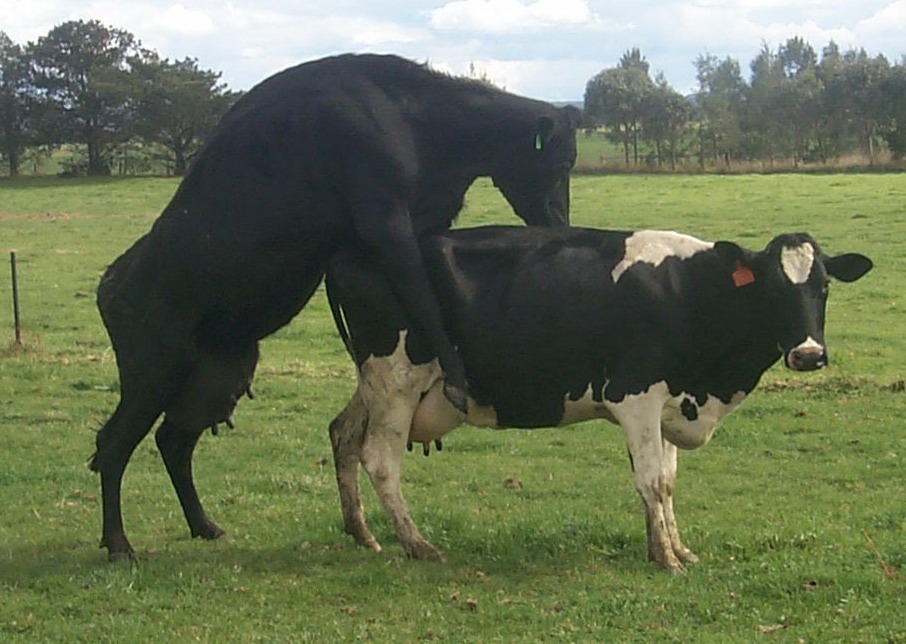Definition: Pregnancy Diagnosis
Pregnancy diagnosis is the process of determining whether a female animal is pregnant. It is a critical aspect of reproductive management in livestock, enabling farmers to monitor and manage the reproductive status of their herds effectively.
In-Depth Analysis and Applications
Overview: Pregnancy diagnosis is essential for optimizing reproductive efficiency, managing breeding schedules, and ensuring the health and productivity of livestock. Various methods, both traditional and modern, are used to diagnose pregnancy in animals, each with its own advantages and limitations.

Fall off the barn roof and busted your keister? Life on the farm or ranch can be tough on the bum. Need a break? Laugh it off at FarmerCowboy.com, the #1 farm humor site. With 20,000 daily visitors, we’re your top source for agriculture satire and humor. Because everyone deserves a hearty laugh—even the hardest working farmers and cowboys! Join us and turn those long days into fun tales at FarmerCowboy.com.
Methods of Pregnancy Diagnosis:
- Rectal Palpation:
Rectal palpation involves manually examining the reproductive tract through the rectum to detect changes indicative of pregnancy.
- Procedure: The veterinarian inserts a gloved arm into the rectum of the animal and palpates the uterus to feel for signs of pregnancy, such as the presence of a fetus or changes in uterine size and texture.
- Advantages: It is a widely used and cost-effective method, providing immediate results.
- Limitations: Requires skilled personnel and may cause discomfort to the animal. It is typically used in larger animals like cattle.
- Ultrasound Examination:
- Description: Ultrasonography uses high-frequency sound waves to create images of the reproductive tract, allowing for the visualization of the fetus and other structures.
- Procedure: A probe is inserted into the rectum or placed on the abdomen to capture images of the uterus and developing fetus.
- Advantages: Provides detailed and accurate information about pregnancy status and fetal health. It can detect pregnancy at an early stage.
- Limitations: Requires specialized equipment and trained personnel, making it more expensive than other methods.
- Blood or Milk Progesterone Tests:
- Description: These tests measure the levels of progesterone in the blood or milk, which are elevated during pregnancy.
- Procedure: A sample of blood or milk is collected and analyzed for progesterone concentration.
- Advantages: Non-invasive and relatively easy to perform. Can be used for early pregnancy detection.
- Limitations: False positives can occur, and the results may require confirmation with other methods.
- Pregnancy-Associated Glycoproteins (PAGs) Tests:
- Description: PAGs are proteins produced by the placenta, and their presence in the blood indicates pregnancy.
- Procedure: A blood sample is taken and tested for PAGs.
- Advantages: Highly accurate and can detect pregnancy earlier than palpation methods.
- Limitations: Requires lab facilities for analysis and may be more costly.
Importance of Pregnancy Diagnosis: Accurate pregnancy diagnosis is crucial for managing breeding programs and optimizing reproductive performance. It allows farmers to identify pregnant animals, manage their nutrition and health, and plan for calving, kidding, or farrowing. Early diagnosis also helps in identifying non-pregnant animals that can be re-bred, improving overall herd fertility.
Economic Impact: Pregnancy diagnosis directly impacts the profitability of livestock operations by ensuring timely rebreeding, optimizing calving intervals, and improving herd productivity. Accurate diagnosis helps farmers make informed decisions about culling, feeding, and managing pregnant animals, leading to better economic outcomes.
Challenges and Considerations:
- Accuracy: The accuracy of pregnancy diagnosis depends on the method used and the skill of the personnel performing it.
- Cost: Some diagnostic methods, such as ultrasound and PAG tests, can be expensive and require specialized equipment.
- Animal Stress: Minimizing stress and discomfort to animals during the diagnostic process is essential for their well-being.
Environmental Considerations: Effective pregnancy diagnosis contributes to sustainable livestock farming by optimizing resource use and reducing the environmental impact. By ensuring that only pregnant animals receive additional nutritional and health care, resources are used more efficiently, reducing waste.
Future Directions:
- Technological Advancements: Development of more advanced and accessible diagnostic technologies, such as portable ultrasound devices and rapid point-of-care tests.
- Genetic Research: Exploring genetic markers associated with pregnancy to develop non-invasive and highly accurate diagnostic methods.
- Automation and AI: Incorporating automation and artificial intelligence in pregnancy diagnosis to enhance accuracy, reduce labor, and provide real-time data.
Industry Trends:
- Precision Livestock Farming: Increasing use of technology and data analytics to improve pregnancy diagnosis and overall reproductive management.
- Global Collaboration: Sharing best practices, research findings, and technological innovations globally to enhance pregnancy diagnostic techniques.
Helpful Content for Farmers: Step-by-Step Guide to Effective Pregnancy Diagnosis:
- Preparation:
- Training: Ensure that all personnel involved in pregnancy diagnosis are well-trained and knowledgeable about the methods and procedures.
- Equipment: Invest in reliable diagnostic tools and equipment, such as ultrasound machines or blood test kits.
- Choosing the Method:
- Rectal Palpation: Suitable for larger animals like cattle and horses. Ensure the veterinarian is skilled in palpation techniques.
- Ultrasound: Ideal for early and accurate detection. Use portable ultrasound devices for convenience and efficiency.
- Blood/Milk Tests: Use progesterone or PAG tests for non-invasive and early pregnancy detection.
- Procedure:
- Rectal Palpation: Gently insert the arm into the rectum and palpate the uterus. Look for signs such as an enlarged uterus or fetal presence.
- Ultrasound: Apply the probe to the rectum or abdomen and capture images of the reproductive tract. Interpret the images for signs of pregnancy.
- Blood/Milk Tests: Collect a sample of blood or milk and send it to a lab for analysis. Interpret the results based on progesterone or PAG levels.
- Post-Diagnosis Management:
- Pregnant Animals: Provide appropriate nutrition, health care, and monitoring to ensure the well-being of pregnant animals.
- Non-Pregnant Animals: Identify and rebreed non-pregnant animals to optimize reproductive efficiency.
Pro Tips for Improving Pregnancy Diagnosis Success:
- Regular Monitoring: Schedule regular pregnancy checks to monitor the reproductive status of the herd.
- Record Keeping: Maintain detailed records of diagnosis results, breeding dates, and reproductive history to track fertility and make informed decisions.
- Health Management: Ensure animals are in good health and free from reproductive disorders before performing pregnancy diagnosis.
Case Studies and Success Stories:
- Dairy Farm in Wisconsin: A dairy farm implemented regular ultrasound examinations for pregnancy diagnosis. The farm reported a 20% increase in pregnancy rates and improved calving intervals, leading to higher milk production and profitability.
- Beef Ranch in Texas: A beef ranch used blood progesterone tests for early pregnancy detection. The ranch achieved better reproductive management and reduced the number of open (non-pregnant) cows, enhancing overall herd productivity.
- Sheep Farm in New Zealand: A sheep farm adopted portable ultrasound devices for pregnancy diagnosis. The farm experienced better lambing outcomes and increased marketable lambs due to timely management of pregnant ewes.
Resources for Further Exploration:
- Pregnancy Diagnosis – Wikipedia
- World Book – Pregnancy Diagnosis
- Britannica – Animal Pregnancy
Originally posted 2024-06-11 16:52:55.







